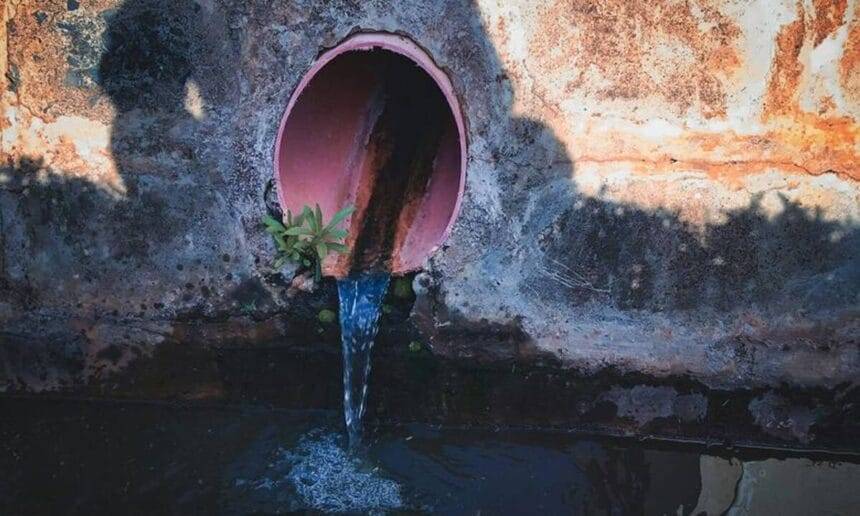Main Points In Hindi (मुख्य बातें – हिंदी में)
-
वैश्विक जल संकट: दुनिया के लगभग 2.2 बिलियन लोगों के पास सुरक्षित पेय जल की पहुंच नहीं है, और लगभग आधी आबादी को पानी की गंभीर कमी का सामना करना पड़ता है। ऐसे में, अपशिष्ट जल का पुनर्चक्रण एक महत्वपूर्ण समाधान के रूप में उभर रहा है।
-
अपशिष्ट जल का पुनर्चक्रण: वर्तमान में, अधिकांश अपशिष्ट जल बिना उपचार के पर्यावरण में छोड़ा जा रहा है, जिससे सार्वजनिक स्वास्थ्य और पारिस्थितिकी पर नकारात्मक प्रभाव पड़ता है। यदि इसे एक संसाधन के रूप में देखा जाए, तो पुनर्चक्रित पानी सिंचाई, औद्योगिक प्रक्रियाओं, और मीठे पानी की आपूर्ति पर दबाव कम कर सकता है।
-
भारत की जल संकट स्थिति: भारत, प्रदूषण और जनसंख्या वृद्धि के कारण, जल संकट से जूझ रहा है। उपचारित अपशिष्ट जल के पुन: उपयोग से नदियों में प्रदूषण की मात्रा कम की जा सकती है, जिससे पारिस्थितिकी तंत्र की बहाली में सहायता मिलती है।
-
सामाजिक बाधाएँ: अपशिष्ट जल के पुन: उपयोग को लेकर जनता की धारणाएँ और चिंताएँ एक बड़ी चुनौती हैं। विशेष रूप से पीने, खाना बनाने और स्नान के लिए पुनर्चक्रित पानी का उपयोग अधिक चिंताएं पैदा करता है।
- सफलता के उदाहरण: नामीबिया और सिंगापुर जैसे देशों ने पुनर्चक्रित अपशिष्ट जल के उपयोग में सफलता प्राप्त की है। नामीबिया ने पानी की कमी के लिए बड़े पैमाने पर सुविधाएँ स्थापित की हैं, जबकि सिंगापुर ने न्यूएटर कार्यक्रम की सहायता से जल सुरक्षा सुनिश्चित की है। इन देशों के अनुभव अन्य देशों के लिए एक मार्गदर्शक हो सकते हैं।
Main Points In English(मुख्य बातें – अंग्रेज़ी में)
Here are the main points from the provided text about the global water crisis and the potential of wastewater recycling as a solution:
-
Global Water Crisis: Water scarcity is becoming a critical global issue, with approximately 2.2 billion people lacking access to safe drinking water. Half of the world’s population experiences severe water shortages at some point.
-
Wastewater Mismanagement: Over 80% of the world’s wastewater is released into the environment untreated, with some developing countries facing rates above 95%. This situation leads to significant public health and environmental risks.
-
Importance of Wastewater Recycling: Treating and reusing wastewater can alleviate pressure on freshwater supplies, support agricultural irrigation, and sustain industrial processes. In developing countries, only 8% of industrial wastewater is treated.
-
Challenges in Implementation: Key challenges include technical barriers, the need for regulatory frameworks, economic considerations, and public resistance due to concerns over the safety and quality of recycled water.
- Successful Case Studies: Countries like Namibia and Singapore have implemented effective wastewater recycling programs, highlighting the importance of public education, trust in treatment technologies, and effective management practices to successfully adopt recycled water for various uses.


Complete News In Hindi(पूरी खबर – हिंदी में)
पानी की कमी एक तत्काल वैश्विक संकट बनती जा रही है, जिससे अरबों लोग प्रभावित हो रहे हैं। संयुक्त राष्ट्र विश्व जल विकास रिपोर्ट 2024 के अनुसार, लगभग 2.2 बिलियन लोगों के पास सुरक्षित पेयजल तक पहुंच नहीं है और दुनिया की आधी आबादी कम से कम कुछ समय तक पानी की गंभीर कमी का अनुभव करती है। इन चिंताजनक आँकड़ों के बीच, अपशिष्ट जल का पुनर्चक्रण एक महत्वपूर्ण समाधान के रूप में उभर रहा है।
वर्तमान में, दुनिया के कुल अपशिष्ट जल का 80 प्रतिशत से अधिक – और कुछ विकासशील देशों में इसका 95 प्रतिशत से अधिक – पहले उपचार किए बिना पर्यावरण में छोड़ दिया जाता है। इसके सार्वजनिक स्वास्थ्य और पर्यावरण पर खतरनाक परिणाम होंगे।
विकासशील देशों में, केवल 8 प्रतिशत औद्योगिक अपशिष्ट जल किसी भी प्रकार के उपचार से गुजरता है। यदि अपशिष्ट के बजाय एक संसाधन के रूप में देखा जाए, तो पुनर्चक्रित अपशिष्ट जल मीठे पानी की आपूर्ति पर दबाव कम कर सकता है, कृषि सिंचाई का समर्थन कर सकता है और औद्योगिक प्रक्रियाओं को बनाए रख सकता है।
प्रदूषण और इसकी विशाल आबादी के कारण भारत दुनिया में सबसे अधिक जल संकट वाले देशों में से एक है। कई देशों की तरह, भारत भी अपनी नदियों, विशेषकर गंगा, जिसे हिंदू पवित्र मानते हैं, को साफ़ करने की चुनौती से जूझ रहा है। उपचारित अपशिष्ट जल का पुन: उपयोग करने से जलमार्गों में प्रवेश करने वाले प्रदूषकों की मात्रा काफी हद तक कम हो सकती है, जिससे नदियों को प्राकृतिक रूप से पुनर्जीवित होने और खुद को साफ करने की अनुमति देकर इन महत्वपूर्ण पारिस्थितिक तंत्रों की बहाली में सहायता मिलेगी। हालाँकि, इसके संभावित लाभों के बावजूद, अपशिष्ट जल के पुन: उपयोग के कार्यान्वयन में कई चुनौतियों का सामना करना पड़ता है।
तकनीकी बाधाओं में उन्नत उपचार प्रौद्योगिकियों और महत्वपूर्ण बुनियादी ढांचे के निवेश की आवश्यकता शामिल है। जल गुणवत्ता मानकों को सुनिश्चित करने और वैकल्पिक जल स्रोतों को अपनाने को प्रोत्साहित करने के लिए नियामक और नीतिगत ढांचे भी स्थापित करने होंगे। उपचार और वितरण की लागत जैसे आर्थिक विचार भी परियोजना की व्यवहार्यता में बाधा डाल सकते हैं। सबसे महत्वपूर्ण बाधा उपचारित अपशिष्ट जल के पुन: उपयोग के प्रति जनता की धारणा और प्रतिरोध है। यह अक्सर पुनर्नवीनीकृत पानी की सुरक्षा और गुणवत्ता के बारे में चिंताओं से उत्पन्न होता है।
सार्वजनिक प्रतिरोध से पार पाना: पुनर्नवीनीकृत पानी के कुछ उपयोग लोगों को उतना परेशान नहीं कर सकते जितना कि इसे पीने, खाना पकाने या स्नान के लिए उपयोग करना। सिंचाई, औद्योगिक प्रक्रियाओं और अपने शौचालय को फ्लश करने के लिए पुनर्चक्रित पानी का उपयोग करने से धारणा संबंधी समस्याएं कम होती हैं, इसे सुरक्षित रूप से किया जा सकता है और इससे मीठे पानी के संसाधनों की मांग कम हो जाएगी।
यह एक आर्थिक लाभ भी होगा. अपशिष्ट जल का पुन: उपयोग उन क्षेत्रों में पानी की लागत को कम कर सकता है जहां मीठे पानी की लागत उपचारित अपशिष्ट जल की लागत से अधिक है।
सार्वजनिक धारणा की बाधाओं पर काबू पाने के लिए उपभोक्ताओं के बीच विश्वास पैदा करने के लिए विविध सांस्कृतिक और धार्मिक पृष्ठभूमि के अनुरूप और सभी आयु समूहों को लक्षित करने वाले सार्वजनिक आउटरीच अभियानों की आवश्यकता होगी। ऐसे जागरूकता और शिक्षा अभियानों को स्थानीय परिस्थितियों और जरूरतों के अनुरूप भी अपनाया जाना चाहिए। स्वामित्व और समर्थन की भावना को बढ़ावा देने के लिए स्थानीय समुदायों को अपशिष्ट जल के पुन: उपयोग परियोजनाओं की योजना और कार्यान्वयन में शामिल किया जाना चाहिए। अपशिष्ट जल उपचार और प्रबंधन का विकेंद्रीकरण समुदायों को सशक्त बना सकता है और उन्हें जल संसाधन प्रबंधन में एक परिभाषित भूमिका दे सकता है। आर्थिक साधन, जैसे प्रोत्साहन या सब्सिडी, समुदायों को उपचारित अपशिष्ट जल को एक मूल्यवान संसाधन के रूप में अपनाने के लिए प्रेरित करने में महत्वपूर्ण भूमिका निभा सकते हैं। हालाँकि, सफल कार्यान्वयन सुनिश्चित करने के लिए इन प्रोत्साहनों को प्रभावी सूचना अभियानों, वकालत प्रयासों और मजबूत नियमों के साथ जोड़ा जाना चाहिए। सामूहिक रूप से उपयोग की जाने वाली ये सभी रणनीतियाँ सामुदायिक विश्वास बनाने में मदद कर सकती हैं, जो पीने योग्य और गैर-पीने योग्य दोनों उपयोगों के लिए पुनः प्राप्त पानी की स्वीकार्यता बढ़ाने के लिए आवश्यक है। सरकारों के लिए सीखने के लिए सफल उदाहरण हैं।
नामीबिया, एक ऐसा देश जो लंबे समय से पानी की कमी का सामना कर रहा है, पुनः प्राप्त अपशिष्ट जल से पीने योग्य पानी का उत्पादन करने के लिए बड़े पैमाने पर सुविधाएं स्थापित करने वाला पहला देश था।
नामीबिया में सीधे पीने योग्य पुन: उपयोग की सार्वजनिक स्वीकृति मुख्य रूप से वैकल्पिक जल स्रोतों की कमी, बिना किसी रिपोर्ट किए गए स्वास्थ्य समस्याओं के 55 वर्षों से अधिक समय तक गोरेंगब वाटर रिक्लेमेशन प्लांट के सफल संचालन, एक खुली सूचना नीति, प्रभावी सार्वजनिक शिक्षा और से प्रेरित है। गुणवत्ता प्रबंधन और प्रयुक्त उन्नत जल उपचार तकनीक में उपभोक्ता का विश्वास।
हाल ही में, सिंगापुर ने न्यूएटर नामक बड़े पैमाने पर अपशिष्ट जल पुन: उपयोग कार्यक्रम लागू किया। जबकि अधिकांश पुनर्नवीनीकृत पानी का उपयोग उद्योग द्वारा किया जाता है, शुष्क अवधि के दौरान इसका कुछ हिस्सा उन जलाशयों की पूर्ति में भी जाता है जो घरों में नल के पानी की आपूर्ति करते हैं। यह कार्यक्रम देश की बढ़ती पानी की मांग को पूरा करने और पर्यावरण की रक्षा करते हुए जल सुरक्षा सुनिश्चित करने में मदद करता है। सार्वजनिक शिक्षा अभियानों और कठोर गुणवत्ता नियंत्रण उपायों के माध्यम से, सिंगापुर ने न्यूएटर के लिए व्यापक सार्वजनिक स्वीकृति प्राप्त की है। पानी की कमी वाले देश इज़राइल ने अपशिष्ट जल के पुन: उपयोग सहित अपरंपरागत तरीकों के माध्यम से उल्लेखनीय जल सुरक्षा हासिल की है। पुनः प्राप्त पानी और अलवणीकरण पर अत्यधिक निर्भर होकर, इसने न केवल घरेलू पानी की जरूरतों को पूरा किया है बल्कि अधिशेष पानी का निर्यात भी किया है। उपचारित अपशिष्ट जल का उपयोग कृषि के लिए किया जाता है, जो कुल कृषि जल उपयोग का लगभग आधा हिस्सा है। इसके अतिरिक्त, प्रबंधित जलभृत पुनर्भरण उच्च मांग या सूखे के समय के लिए पानी को संग्रहीत करने में मदद करते हैं। चूँकि दुनिया पानी की बढ़ती कमी और पर्यावरणीय चुनौतियों का सामना कर रही है, अपशिष्ट जल का पुन: उपयोग एक आशाजनक समाधान प्रस्तुत करता है जो समाज को लाभान्वित कर सकता है। यह एक स्थायी भविष्य सुरक्षित करने की दिशा में एक रास्ता है जिसमें हर बूंद मायने रखती है।
(लेखक नई दिल्ली में द एनर्जी एंड रिसोर्सेज इंस्टीट्यूट (टीईआरआई) से हैं;
Complete News In English(पूरी खबर – अंग्रेज़ी में)
Water scarcity is becoming an urgent global crisis affecting billions of people. According to the United Nations World Water Development Report 2024, around 2.2 billion people lack access to safe drinking water, and half of the world’s population experiences severe water shortages at least some of the time. Amid these alarming statistics, the recycling of wastewater is emerging as a crucial solution.
Currently, over 80% of the world’s total wastewater—and more than 95% in some developing countries—is released into the environment without any treatment. This has dangerous consequences for public health and the environment.
In developing countries, only 8% of industrial wastewater undergoes any form of treatment. If wastewater is viewed as a resource rather than a waste, recycled wastewater can reduce pressure on freshwater supplies, support agricultural irrigation, and sustain industrial processes.
Due to pollution and its large population, India is one of the countries facing the most severe water crisis. Similar to many countries, India is struggling to clean its rivers, especially the Ganga, which is considered sacred by Hindus. Reusing treated wastewater can significantly reduce the amount of pollutants entering waterways, helping to naturally restore and clean these vital ecosystems. However, despite its potential benefits, implementing wastewater reuse faces numerous challenges.
Technical challenges include the need for advanced treatment technologies and significant infrastructure investments. Regulatory and policy frameworks must also be established to ensure water quality standards and encourage the adoption of alternative water sources. Economic considerations, such as the cost of treatment and distribution, can also hinder project feasibility. The most critical barrier is public perception and resistance to reusing treated wastewater, often stemming from concerns about safety and quality.
Overcoming public resistance: Some uses of recycled water may not disturb people as much as using it for drinking, cooking, or bathing. Using recycled water for irrigation, industrial processes, and flushing toilets tends to reduce perception issues, as it can be done safely and decrease the demand for freshwater resources.
This also brings economic benefits. Reusing wastewater can lower water costs in areas where the cost of freshwater exceeds that of treated wastewater.
To overcome barriers related to public perception, outreach campaigns targeting diverse cultural and religious backgrounds and all age groups will be necessary to build consumer trust. Such awareness and educational efforts should be adapted to local conditions and needs. Involving local communities in the planning and implementation of wastewater reuse projects can help promote a sense of ownership and support. Decentralizing wastewater treatment and management can empower communities and give them a defined role in water resource management. Financial incentives, such as subsidies, can encourage communities to adopt treated wastewater as a valuable resource. However, these incentives must be combined with effective information campaigns, advocacy efforts, and strong regulations to ensure successful implementation. Collectively, these strategies can help build community trust, essential for increasing the acceptance of reclaimed water for both potable and non-potable uses. Governments can learn from successful examples worldwide.
Namibia, a country that has long faced water shortages, was the first to establish large-scale facilities for producing drinking water from reclaimed wastewater.
The public acceptance of direct potable reuse in Namibia is primarily driven by the scarcity of alternative water sources, over 55 years of successful operation of the Goreangab Water Reclamation Plant without reported health issues, an open information policy, effective public education, and consumer trust in quality management and advanced water treatment technologies.
Recently, Singapore implemented a large-scale wastewater reuse program called NEWater. While most of the recycled water is used by industries, some of it also helps replenish reservoirs that supply tap water to homes during dry periods. This program aids in meeting the country’s growing water demand while protecting the environment and ensuring water security. Through public education campaigns and stringent quality control measures, Singapore has achieved widespread public acceptance for NEWater. Water-scarce Israel has attained remarkable water security through unconventional methods, including wastewater reuse. By relying heavily on reclaimed water and desalination, it not only meets its domestic water needs but also exports surplus water. Treated wastewater is used for agriculture, accounting for nearly half of the total agricultural water use. Additionally, managed aquifer recharge helps store water for high demand or drought periods. As the world faces growing water scarcity and environmental challenges, reusing wastewater presents a promising solution that can benefit society. It is a pathway toward securing a sustainable future where every drop counts.
(The author is from The Energy and Resources Institute (TERI) in New Delhi.)








